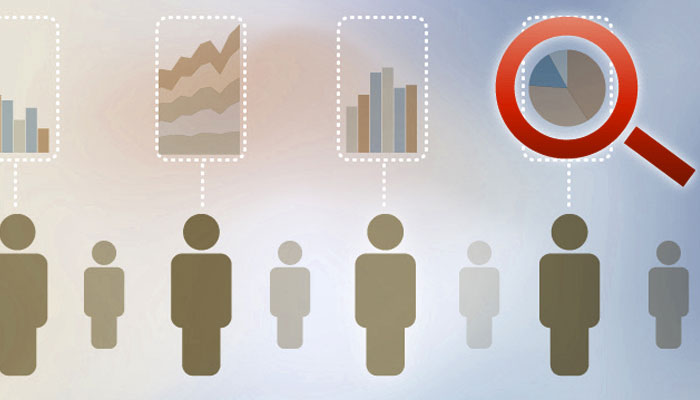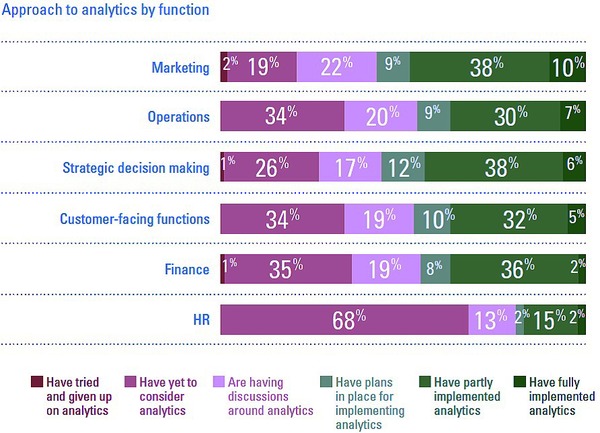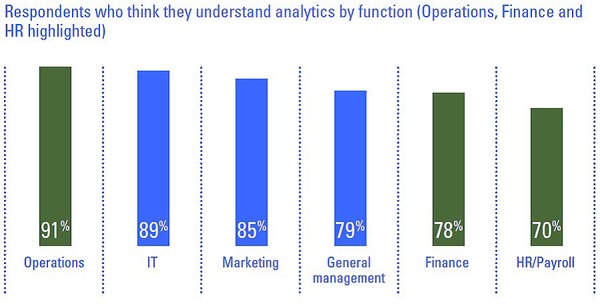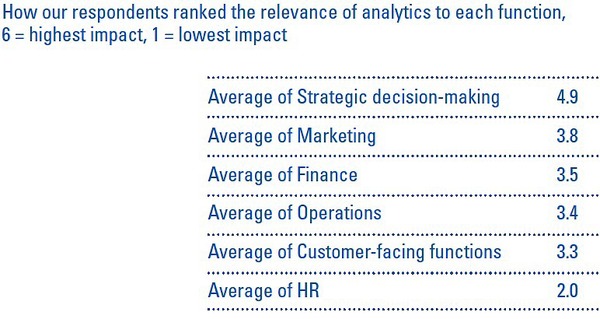Many HR professionals and organizations perhaps believe that HR analytics is just a fuzzy math. That’s why a report by Advanced Business Solutions observes that only 17% of HR professionals in the UK are using analytics technology which comes PRECONFIGURED with almost all leading HRMS solutions.
Presenting and discussing an HR analytics report with the senior management may create an uncomfortable moment for HR professionals who have worked very hard on the report. Managers may ask some pressing questions such as: why the team’s productivity is less if all projects are doing great or, the number doesn’t make sense to me! If human resource data analysts fail to answer such questions, senior management gets an impression that HR analytics is just a fuzzy math. However, an experienced analyst can very well explain the data and help managers achieve appropriate insights. In our previous blog posts, we have been talking about crucial role of HR analytics and Big Data in businesses. Find here some relevant links:
- Warning – 45 Per Cent Employees Quit their Job in Less Than a Year!
- Why do employees exit? Analysis of Employee Exit Reasons using 50K+ records
- Technology and Data-Driven HR: Impact on the Women Workforce
- Employee Leave Trends : 1.75 Million+ Records Analyzed From 250+ Businesses
- Warning: You’re Losing Money by Not Using Big Data Analytics in Human Resources
A Success Story
ConAgra Foods had tried to work on HR analytics in-house but failed and then the company decided to focus on its core expertise and outsourced the HR analytics work. This idea worked and the company started gaining valuable business insights. Some key TAKEAWAYS include:
- Actionable insight at the right time is crucial to realize the benefits of HR analytics.
- Fast-paced analysis of HR data is required during budgeting, organization restructuring, annual performance review and so on. Delays defeat the objective of the analysis.
- HR departments (in SMEs) do not have sufficient budgets to install the advanced analytical tools.
- Internal HR’s analytical capability is typically limited. Many CEOs believe that HR professionals would need time to build skills in this area.
Way Ahead
The aforementioned report (by Advanced Business Solutions, mentioned in 1st paragraph) which says that less than a fifth of HR professionals are using analytics technology, also reveals that 73 percent of survey respondents have admitted to its importance. Some other useful findings of the report are illustrated in the following charts and graphs which tell that slowly and steadily HR analytics is strengthening its presence:
Author’s Take
A clear strategy is important for big investment in analytics. The first step towards building a good analytics insight is to move away from multiple HR systems and focus on developing a single tool to manage all aspects of the employee lifecycle. While it is not possible to be a Google overnight, continuous tracking of data and management of employee records will help achieve this goal in a period of 18 – 24 months.







